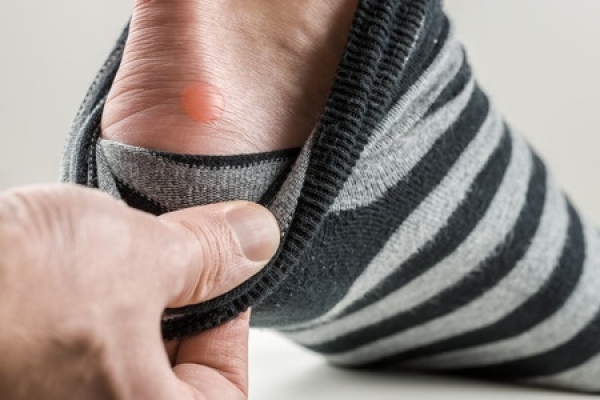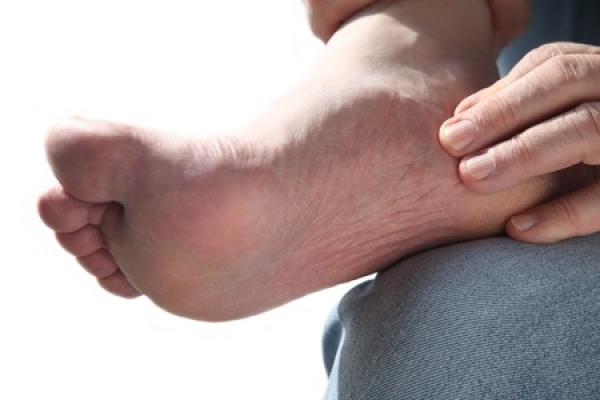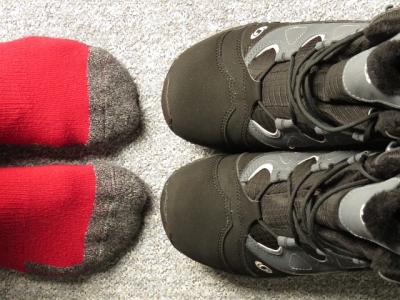Connect With Us
Blogs

Common Foot Problems (3)
Blisters are a minor foot problem that can cause a major pain and definitely put a temporary crimp in your summer activities. Blisters occur more frequently in the hot months because they are caused by the friction of your socks or shoes rubbing against your skin. Sweat increases friction and hence, more blisters. At Superior Foot & Ankle Care Center we would like to offer some tips for preventing and treating blisters:
- Keep feet dry. As soon as you notice your feet are damp, change your socks. If you tend to sweat profusely, use a foot powder. In addition to blisters, damp feet can be the perfect breeding ground for fungal and bacterial infections.
- Buy shoes that fit properly. The idea that shoes need a breaking in period is a myth. Shop for new shoes at the end of the day—that’s when feet are most swollen. Also, it’s best to not bring a brand new pair of shoes on vacation where you’ll be doing a lot of walking.
- Pack moleskin for your summer vacation. If you begin to feel a sore spot on your heel or toes, cover with a piece of mole skin and change your shoes as soon as you are able to.
- If a blister does form, do not pop it. Cover with a bandage to prevent further irritation. Your body will naturally reabsorb the fluid.
- Should a blister open on its own, wash it with soap and water only. Then apply a small amount of antibacterial ointment and cover with a bandage. Do not cut or tear the open skin. The risk of infection is greatly increased with the skin being open and exposed.
For the most part, blisters are not a medical threat unless they become infected. In that case, you will notice pus or other drainage and potentially a foul odor coming from this blister. If this occurs or the blister appears to be filled with blood, contact our Venice office at: (562) 420-9800. One of our podiatrists, Dr. Victoria Foley or Dr. Constance Ornelas will need to examine your blister and determine if an infection or other problem has developed.
Although corns and calluses are very common and something we treat often at Superior Foot & Ankle Care Center, we often find that our patients have a number of misconceptions about them. Find out how much you know about corns and calluses with our true/false statements below:
Corns and Calluses are pretty much the same thing.
False. Although corns and calluses both involve the thickening of the skin in response to repeated pressure, corns have a small, hard center.
Corns and calluses are basically skin problems.
False. Actually, corns and calluses are indications of a bone problem. They form in response to an internal issue in your foot. You might have a heel spur or a dropped metatarsal head under the ball of your foot. When there is a bony enlargement or a bone is out of place and receives excessive pressure as you walk a callus or corn may form as a way of protecting the tissue beneath the surface of the skin.
Calluses can be painful.
True. Nerves can become compressed and bursa sacs inflamed when you continue to exert pressure on an area where a callus has formed. This pain can range from aching and sore to extremely sharp or stabbing pains. Another cause of pain is the friction caused by shoes rubbing over the callus or corn which can create a blister or an open sore and possibly lead to an infection.
Treatment for calluses can include orthotics, cortisone injections and even surgery.
True. Technically the callus itself can be removed with exfoliation or an over the counter product or at the podiatrist’s office but it’s the underlying cause that needs to be treated in order for the callus to be permanently eliminated. Our podiatrists, Dr. Victoria Foley and Dr. Constance Omelas will examine your foot and determine the problem beneath the callus. Relief from pain and pressure on the affected area may be achieved with a cortisone injection or by using orthotics to shift weight away from the trouble spot. Surgery may be recommended to remove a spur or correct a bone that has become displaced.
If you have a callus or corn that causing you discomfort, contact us for an appointment at our Long Beach office.
You may be familiar with the symptoms of athlete’s foot, especially if you’ve had it before: extremely itchy, burning skin (usually starting between your toes) that becomes red and flaky. If not treated, painful blisters may develop and athlete’s foot can spread to the rest of your foot, your toenails and even other parts of your body. At Superior Foot & Ankle Care Center we believe that prevention is the best treatment. Some common ways that athlete’s foot is spread include:
- Sharing socks, shoes, towels or anything that touches another person’s feet
- Walking barefoot in public places like gym locker rooms, public showers
- Poor hygiene: feet should be washed with soap and water every day and dried completely
- Choosing footwear not made of breathable materials that do not allow air to circulate
- Allowing feet to stay in damp socks and shoes—the perfect setting for fungi and bacteria to thrive
If you have symptoms of athlete’s foot, you should contact our Long Beach office for an appointment by calling: 562-420-9800. Our podiatrists, Dr. Victoria Foley and Dr. Constance Omelas will examine your feet to determine the best treatment. There are several different types of fungi that can cause athlete’s foot and it’s important to identify the fungus behind the infection in order to choose the correct type of medicine for treatment. Topical medications in the form of creams and sprays are often used to eliminate athlete’s foot. Oral medications may also be prescribed in more severe cases. The doctor may also suggest that you use an over the counter antifungal powder on your feet as a preventive measure going forward. For some patients, athlete’s foot may be a recurring problem.



